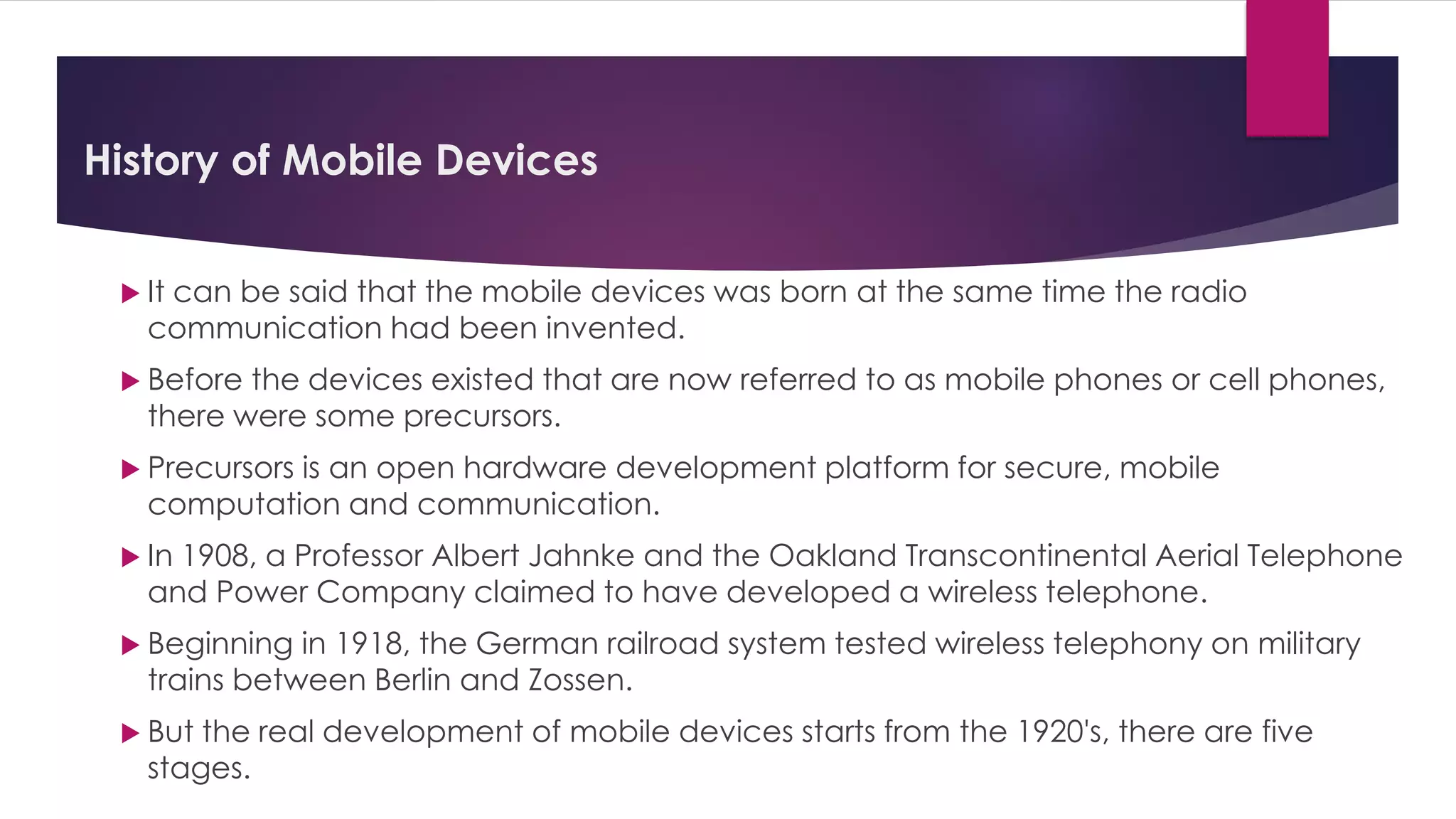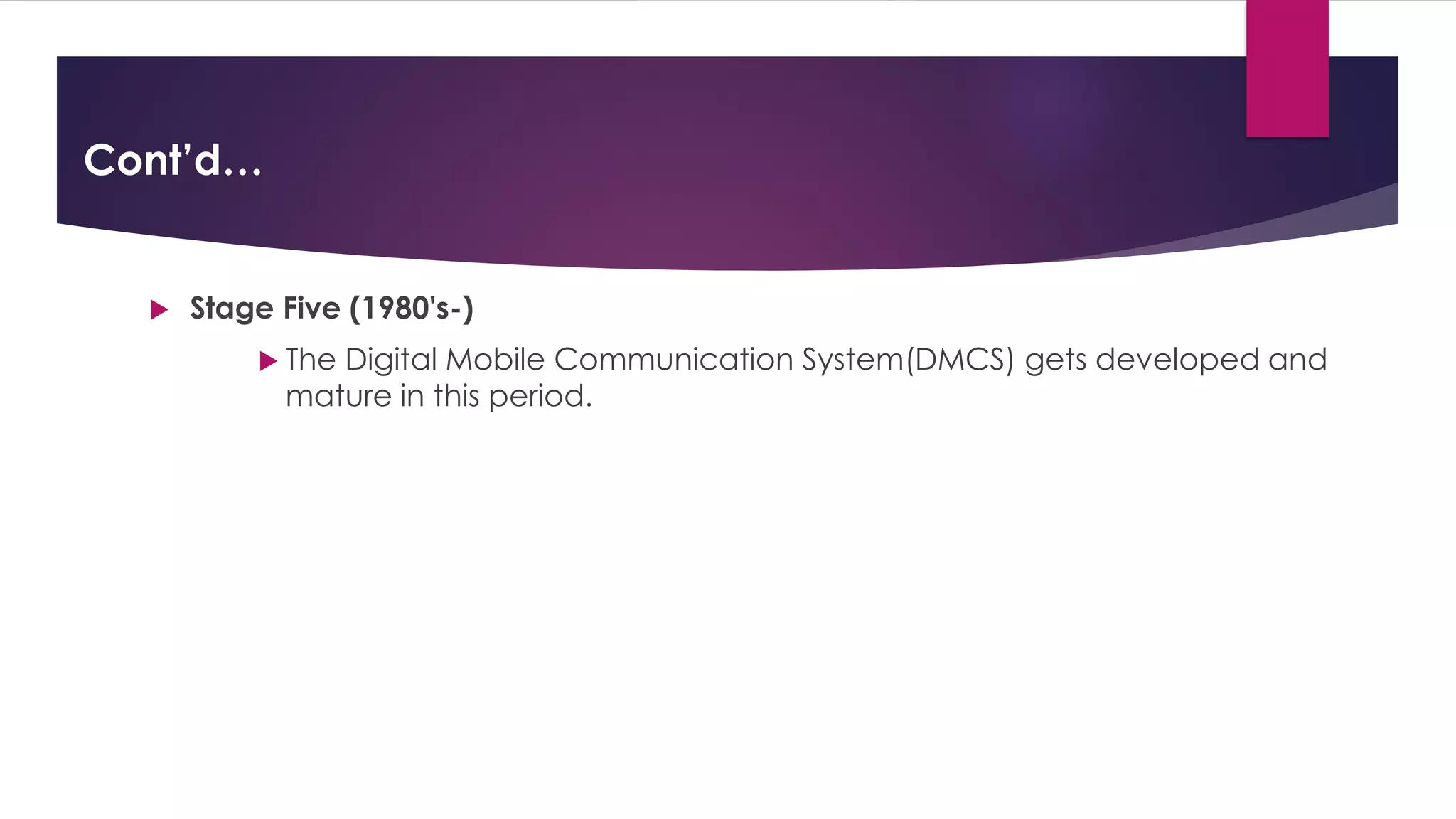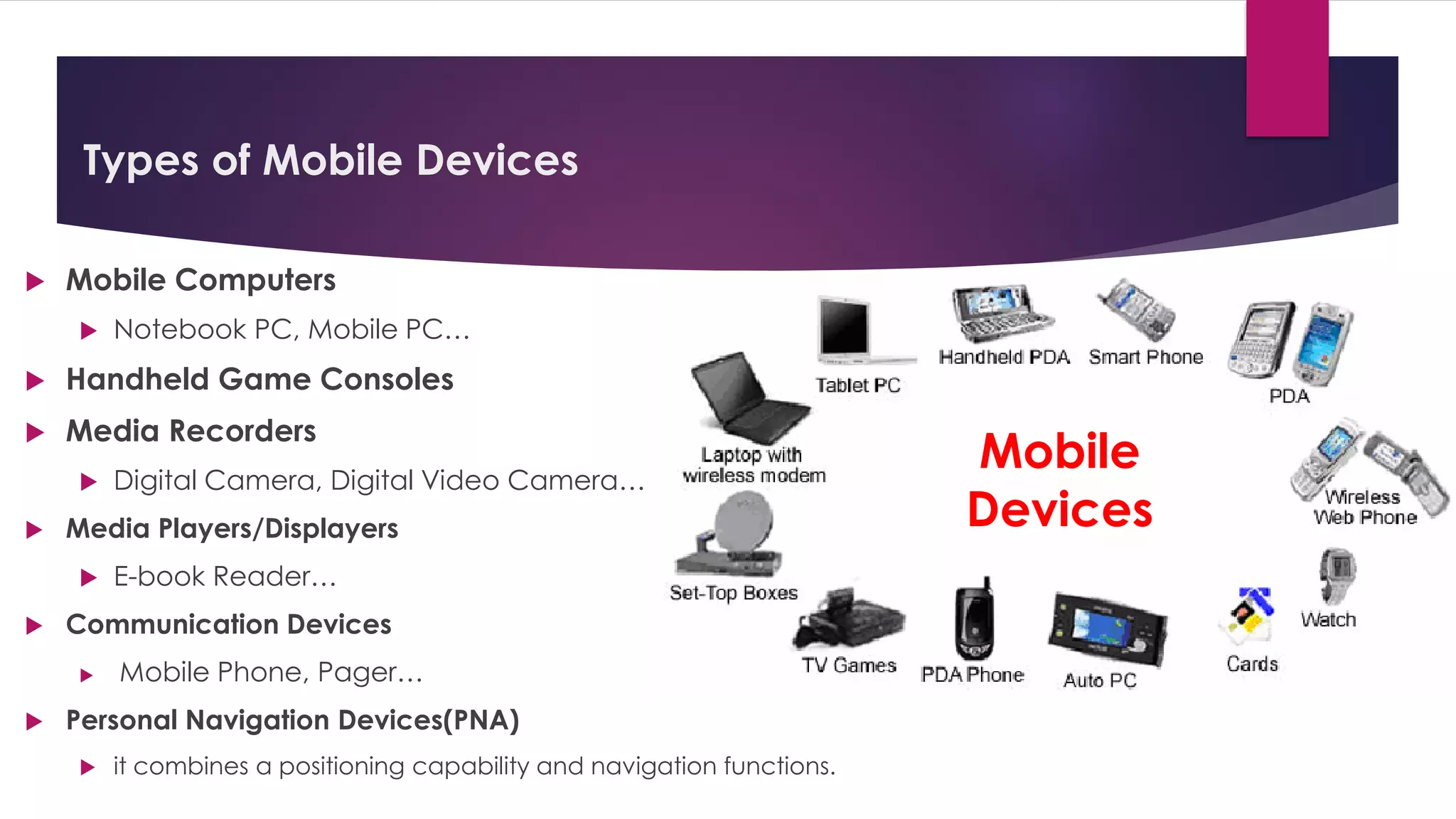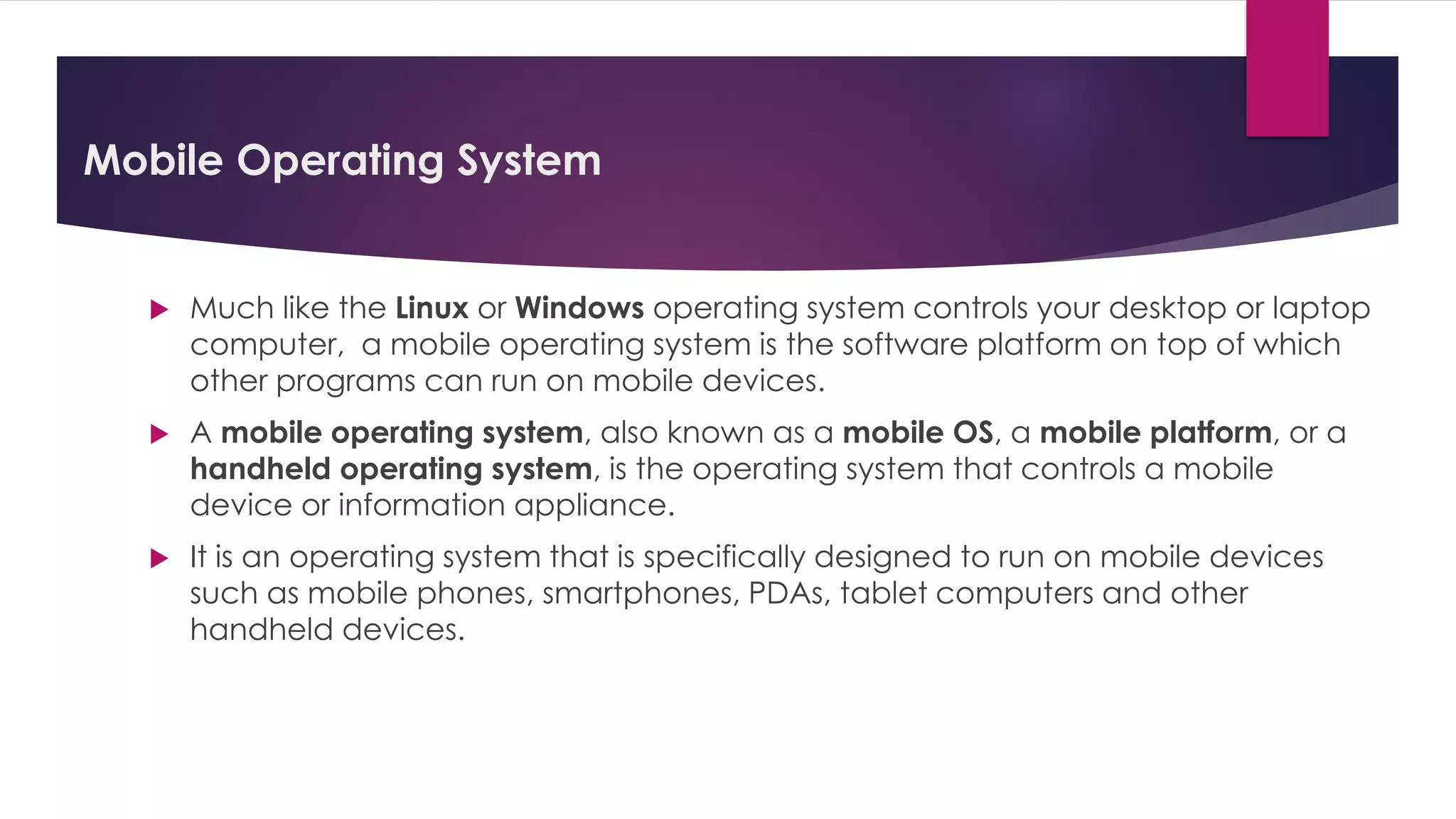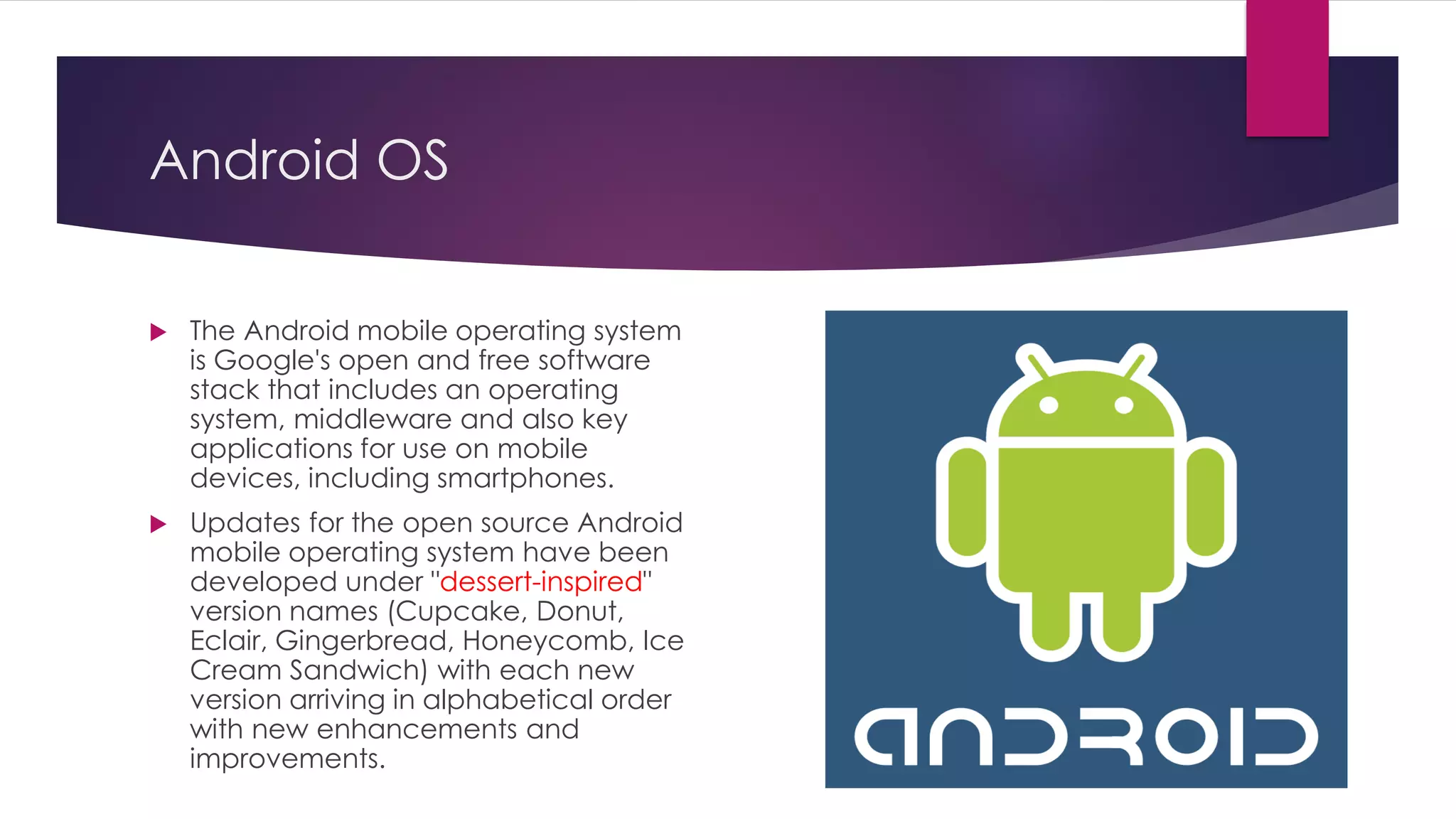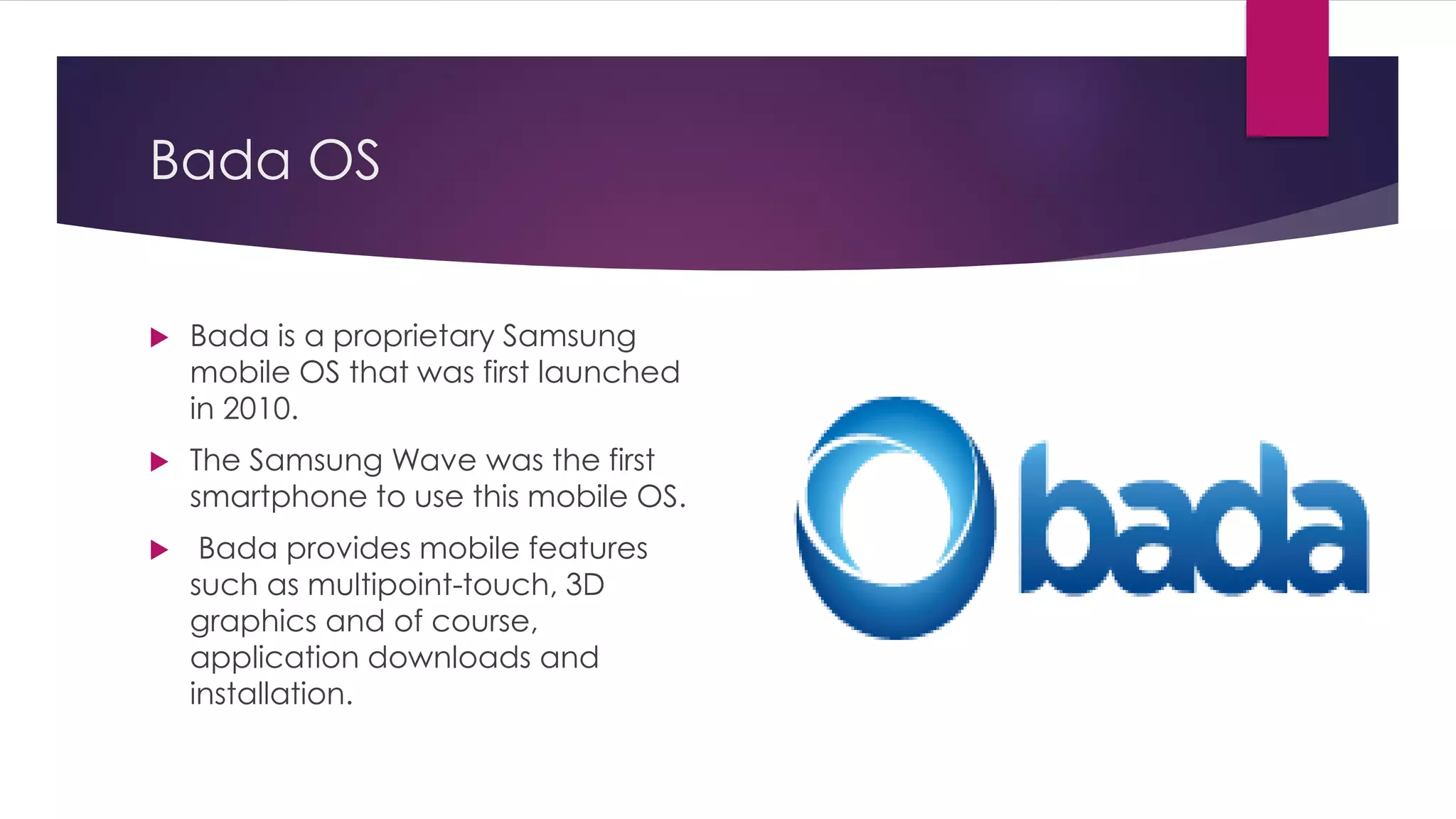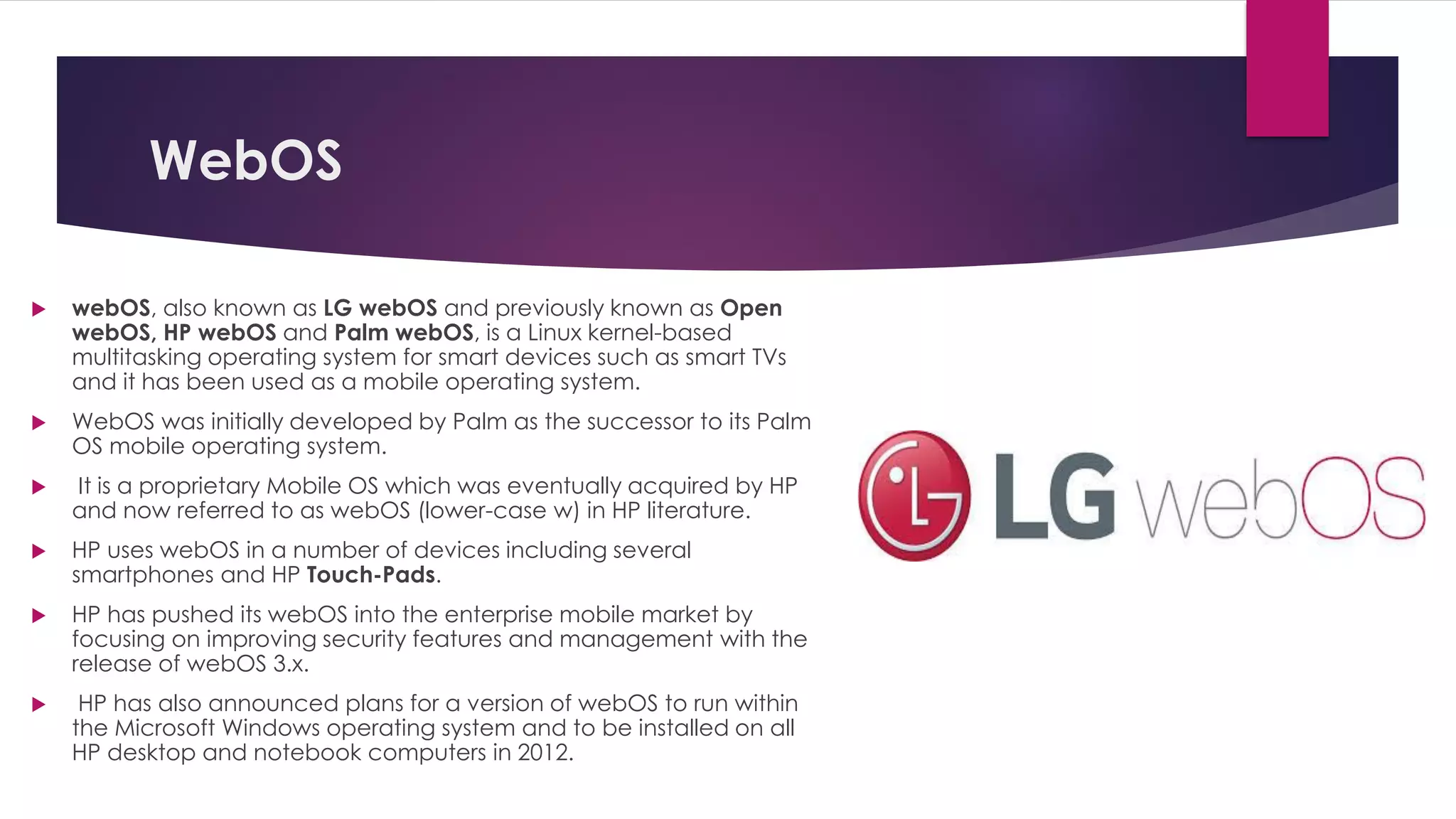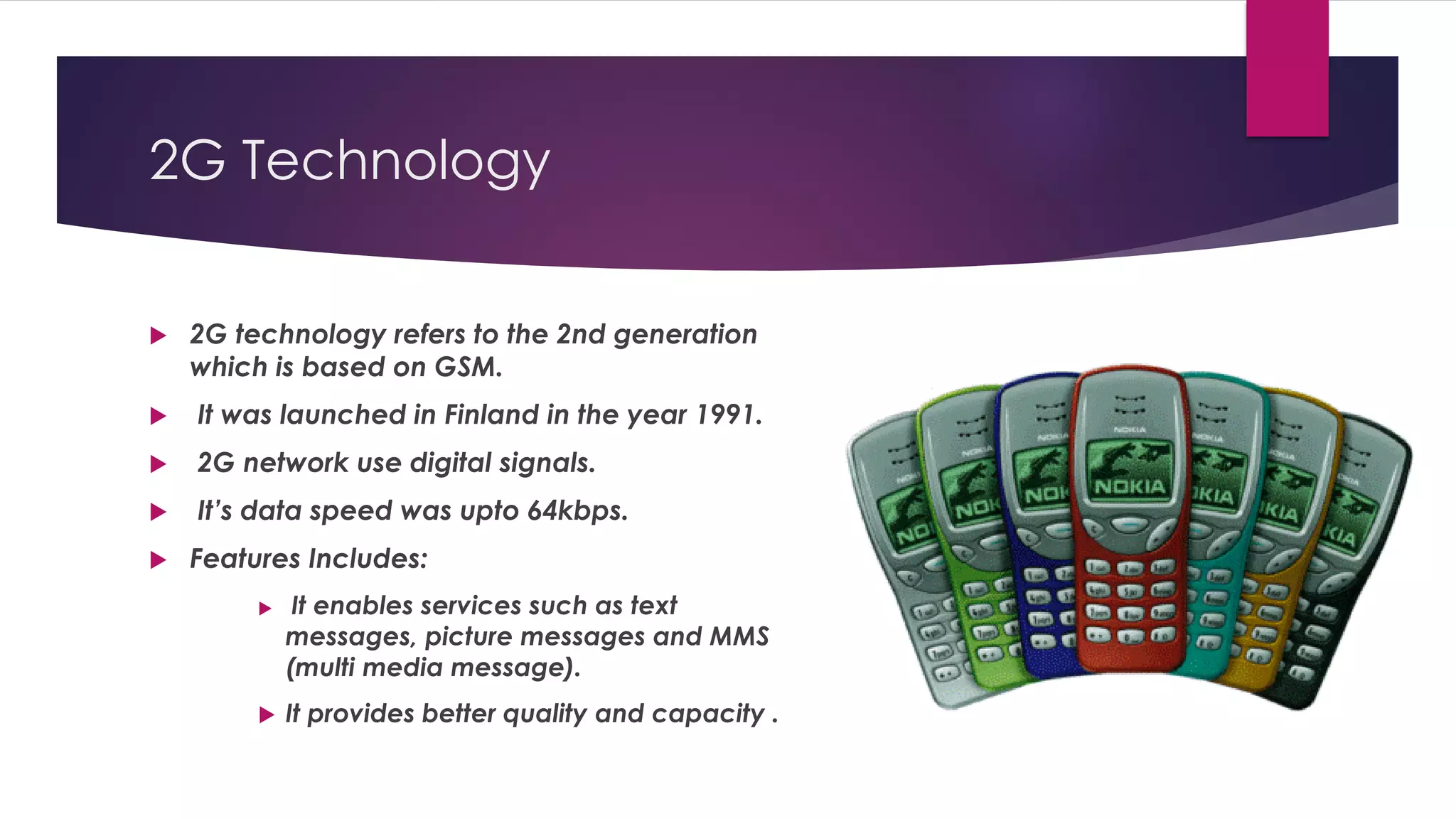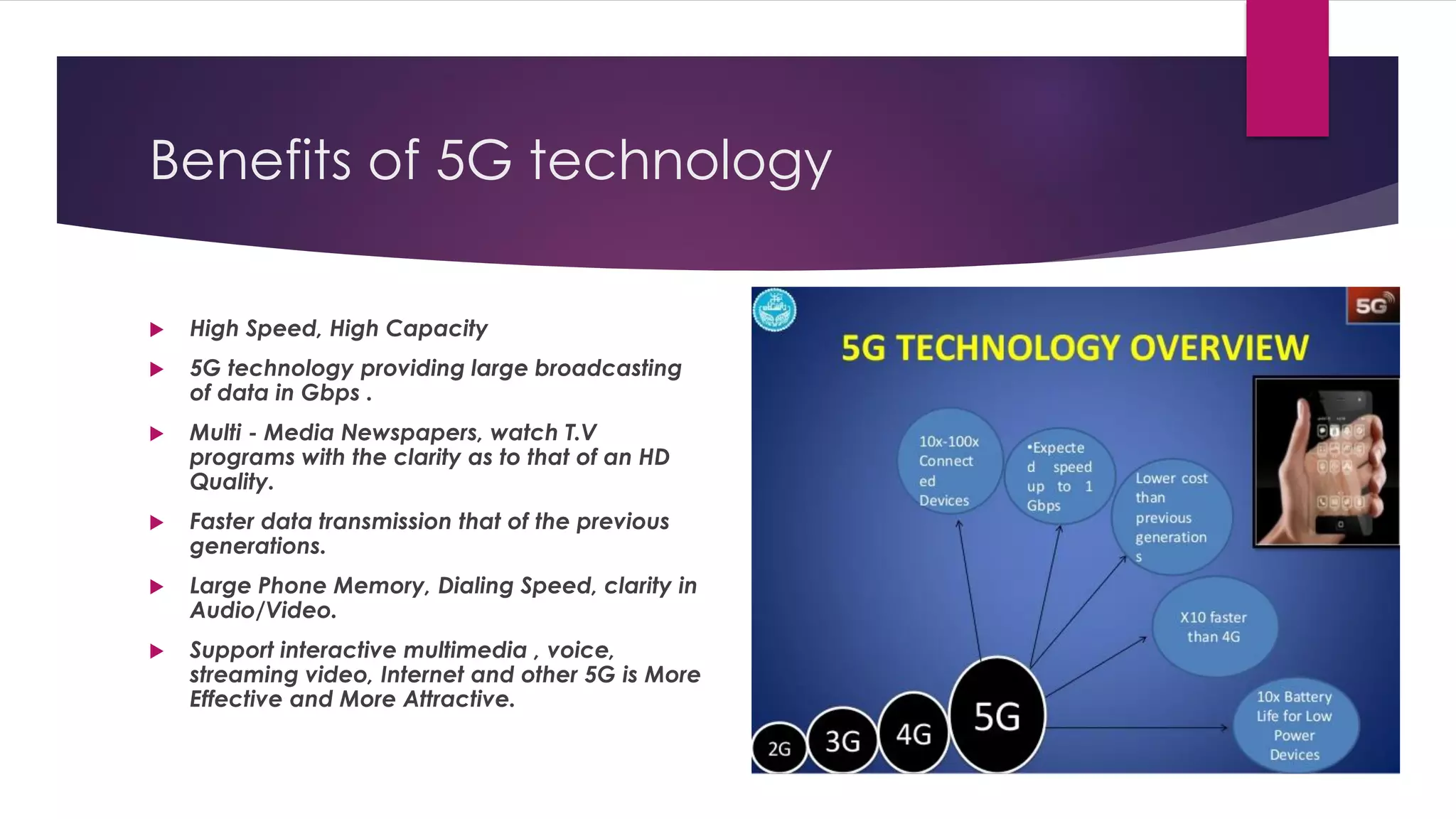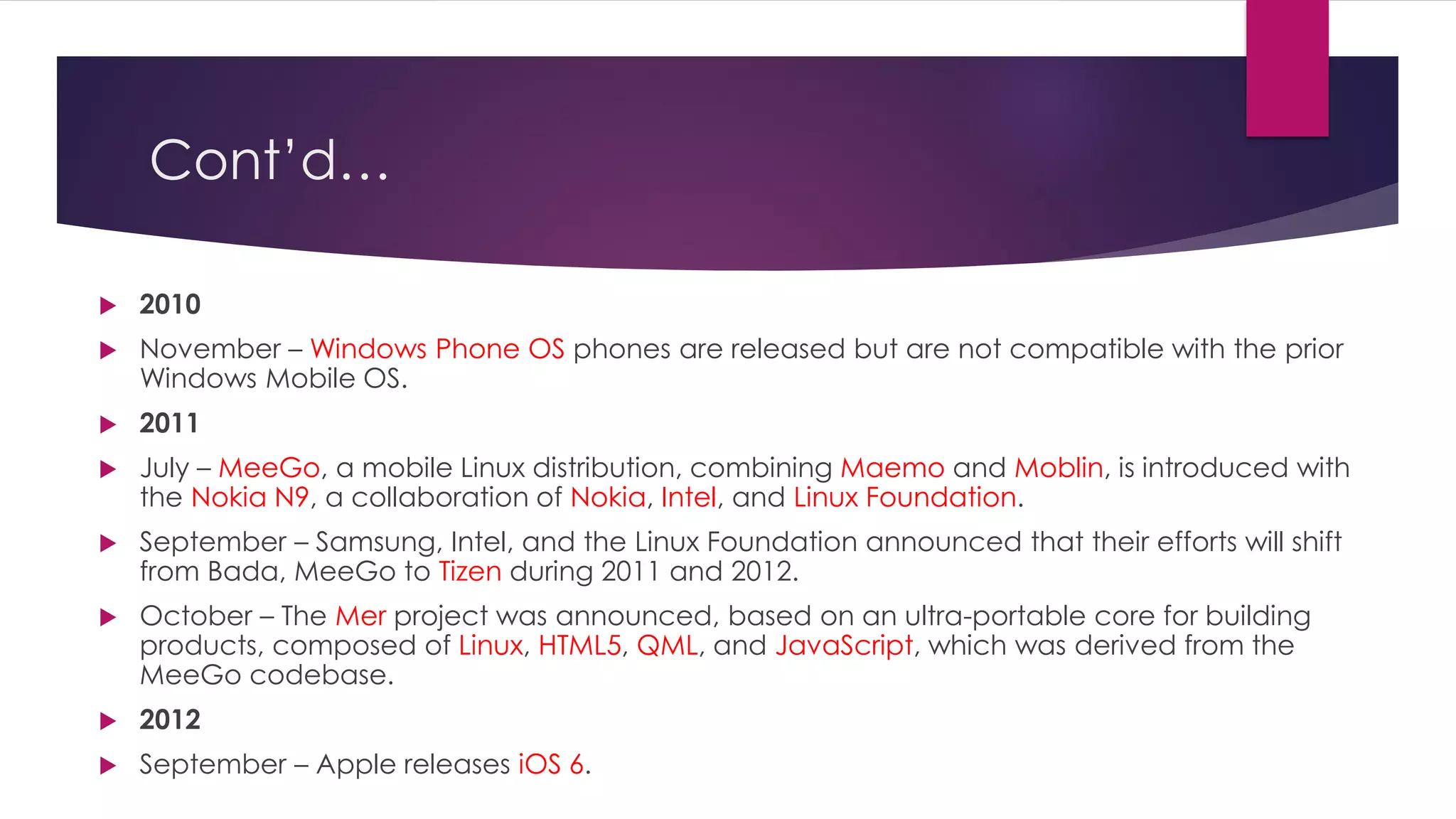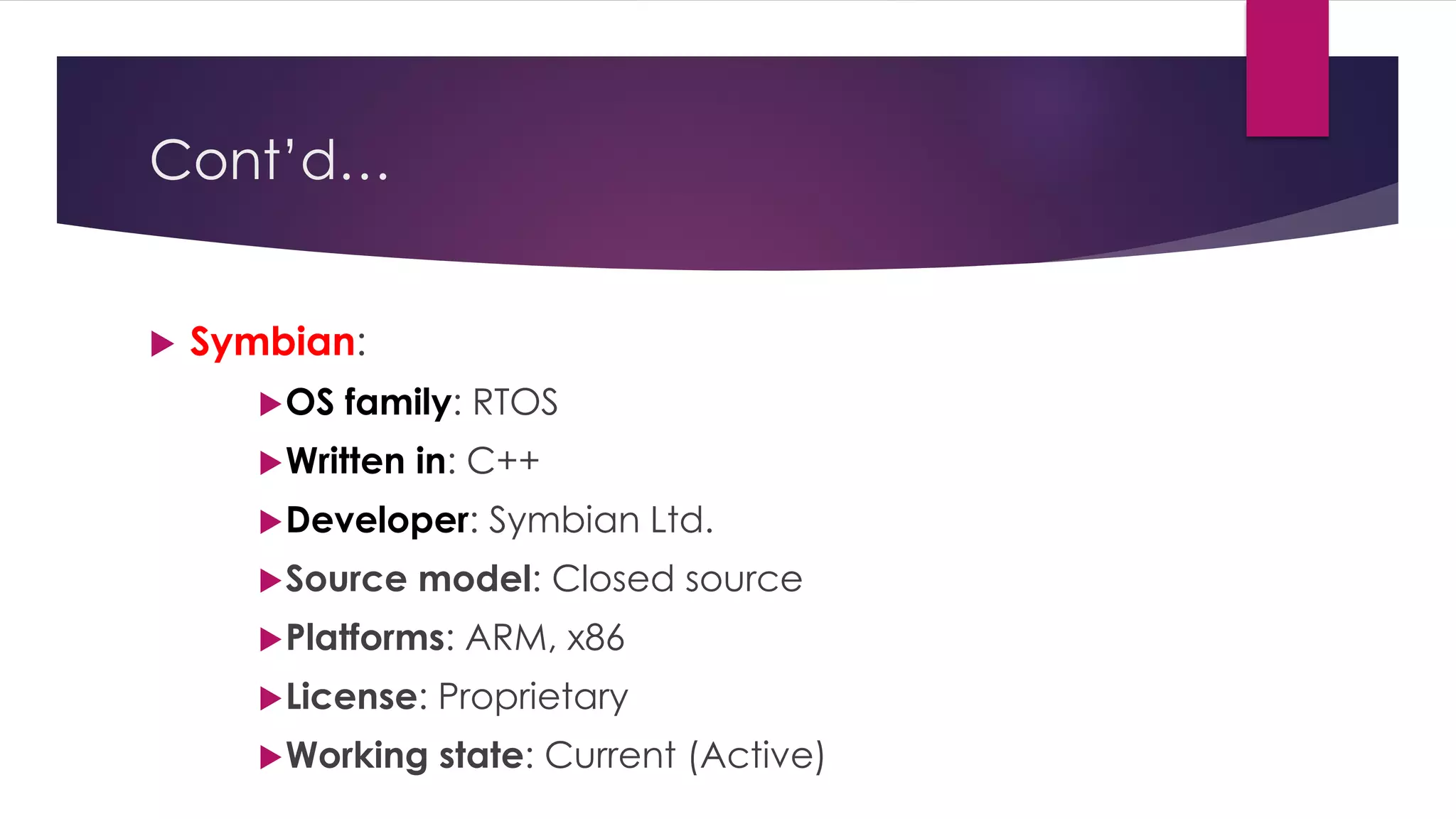This document provides an introduction to mobile application development and mobile operating systems. It discusses the history of mobile devices from the 1920s to present day, covering the development of 1G to 5G technologies. It also describes major mobile operating systems like Android, iOS, Blackberry OS, Windows Mobile, and others, and provides a timeline of their development.




